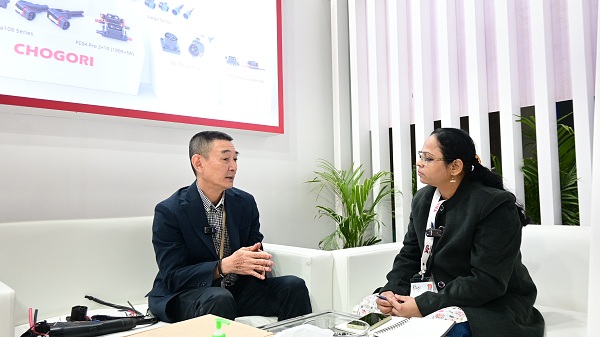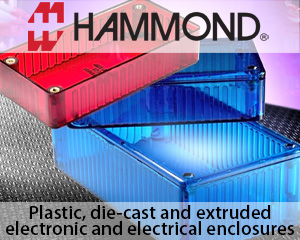Interview with Mr. Kelvin Ng, Group Vice President, Chogori Technology

Could you start by giving us an overview of the Chugari brand, its presence in India, and your vision and mission for introducing products tailored to the Indian market?
Chugari was established in 2007 by Mr. James Wu, one of the company’s founders. I joined the journey earlier, around 2004 or 2005, contributing to what has now been a full decade of growth. We specialize in connector design and cable assembly manufacturing, with our primary factory located in Dongguan, China, and another facility in Kuala Lumpur.
Over the years, we’ve catered to various markets and are proud to be IATF 16949 certified, an automotive standard for product development. Our manufacturing processes follow a lean system, emphasizing single-piece flow production—each connector is made individually, ensuring precision and quality.
Initially, we focused on legacy products in areas such as lighting, including streetlights and landscaping solutions. However, our current priorities include electric two-wheelers, spanning scooters and motorcycles. We’re also heavily invested in renewable energy sectors, including large-scale solar projects and energy storage solutions. These are the core areas driving our focus and innovation today.
How do you view the Indian EV market, particularly the two-wheeler segment you’re focusing on? How is demand evolving in this area, and what are your growth targets for the segment?
Our journey into the Indian market began around 2016-2017. It was during this period that we recognized the growing need for electrification in the two-wheeler and four-wheeler segments. Personally, I’ve always been keen to stay informed about market developments, and having spent over 25 years outside of India, I’ve maintained strong connections with the country through various exchanges and friendships. My previous experience includes working with factories in Kerala, Cochin, and Bangalore, which gave me some familiarity with the region.
When we decided to enter the Indian market, we engaged extensively with stakeholders like OEMs, vehicle assemblers, battery manufacturers, and charger manufacturers. We were fortunate to bring our solutions to India during a time when the need for electric vehicle components was on the rise.
Our collaboration with companies like Bosch played a significant role in establishing our presence here. Our products are now widely used in batteries and drivetrains, and we’ve gained visibility globally through exhibitions. This facilitated our market entry and allowed us to design and integrate solutions tailored to the Indian market. Over time, we’ve expanded our product portfolio and strengthened our understanding of the market, paving the way for continued growth in this segment.
What are the competitive features of your products that make them stand out in the market?
Over the years, we’ve developed a wide range of applications and use cases, focusing on how our products benefit both assemblers and end-users. From the customer’s perspective, our products deliver exceptional value, while for end-users, we emphasize functionality.
We invest considerable time in product management to understand market needs and create solutions that are not one-off but part of a broader, long-term product strategy. When we design a product series, we think about its architecture and lifecycle, ensuring it remains relevant for the next 5–10 years. This forward-thinking approach sets us apart, even as similar products from competitors enter the market.
Many OEMs trust us because of our manufacturing expertise and rigorous standards. Being IATF-certified and adhering to the Advanced Product Quality Plan (APQP) ensures our product design cycles are more thorough compared to others. OEMs have visited our factories, observed our processes, and seen the precision in how we design and manufacture. This has given them confidence in our products.
Could you share details about the new products launched at this exhibition and their standout features?
One of the key products we’ve launched is the Commercial Fast Charge, which supports 50, 70, and 100 amperes. It builds on our previous Home Charge product, which supports 25 amperes. A major differentiator is that this product can be fully assembled in India.
Given that cables make up 40–50% of the total material cost, we’ve worked to reduce this expense by enabling local assembly. We provide SOPs to guide cable manufacturers and OEMs, helping them streamline the process. For larger OEMs, we even offer fully assembled solutions.
We’ve also introduced a new four-latch connector system designed for improved functionality in modern applications, such as battery swapping. It ensures compatibility with both older and newer panels, allowing seamless adoption in the market. Additionally, our connectors now feature deeper IP67-rated waterproofing, ensuring durability and reliability under challenging conditions.
How do you ensure the safety, durability, and longevity of your products?
Safety and durability are integral to our designs. Many leading OEMs who use our first-generation solutions rely on us to maintain continuity for 8–10 years, as is common in the automotive sector. We extend product lifecycles to ensure that older and newer connectors remain compatible, offering flexibility and reliability to customers.
Our goal is to continually enhance quality, reliability, and durability, giving customers the confidence that our solutions meet the highest standards for long-term use.
Can you tell us about your distribution network and presence in India?
Currently, we operate through a couple of channel partners in India. Millennium Semiconductor and Swingtel, both based in the western region, form a significant part of our distribution network. Additionally, we have a sales office in Bangalore, managed by Mr. Karthik Asakian. Recently, we’ve also expanded our sales operations to Delhi, although the details are yet to be officially announced.
Our Asia-Pacific headquarters is in Singapore, managing operations outside of China, with close collaboration from our team in China. However, we face challenges in deploying localized support staff in India and Singapore. Looking ahead to 2025, we aim to strengthen our presence further by bringing in more engineers from China to support our operations in India.
How do you handle after-sales services for your customers in India?
Our after-sales support is managed by field application engineers (FAEs) who are not based in China and can respond promptly. We also maintain strong relationships with top-tier customers, ensuring open communication and direct access to senior-level support when needed. This integrated approach ensures seamless assistance for our customers.
What are your future product plans and innovations for the coming year?
We are continuously exploring ways to address the rising demands from customers, particularly for higher power solutions. For example, as customers move towards 9 kW or 10 kW systems, which require currents of 140–150 amperes, we’re working on developing products that meet these needs within the same form factor.
We are also focused on creating compact solutions with integrated power and signal capabilities while addressing challenges like EMI and ensuring robust shielding. Products like our “Bangga 100,” inspired by Bangalore, cater to 100-ampere requirements and have garnered interest both in India and international markets like Africa. Our roadmap includes expanding our portfolio to support evolving standards like Type 6 and Type 7, aligning with OEM requirements.
Are there specific design requirements for the Indian market compared to other regions?
India has unique requirements, particularly with emerging standards like Type 6 and Type 7. We align our products with these standards and market preferences, such as DC charging for home solutions and AC-to-DC conversions. While we don’t dictate specific standards, we support customers by adapting to their needs and the market trends.
For instance, we’ve developed products like the Bangga 100, a 100-ampere solution tailored for India and adaptable to other regions. This ensures that our products are compatible with existing systems while providing a natural progression to newer configurations.
What is your team strength in India, and are there any hiring plans?
Answer: Our team in India is growing steadily. We’ve recently added members in Delhi and set up an office in Bangalore last year. Depending on market conditions, we plan to expand our operations and strengthen our local workforce to better support the growing demand. However, logistical challenges currently prevent our team from China from working here, which we aim to resolve in the near future.







